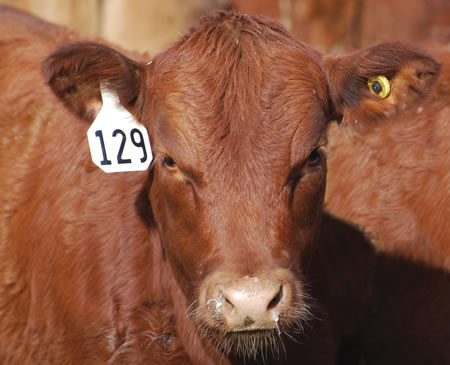Biosecurity on the Farm a Must for Prairie Farmers
Funding available for farmers establishing biosecurity measures in Manitoba
 Biosecurity is a hot topic for Manitoba poultry, beef and swine farmers these days with periodic reports of disease spreading between animals, farms and countries.
Biosecurity is a hot topic for Manitoba poultry, beef and swine farmers these days with periodic reports of disease spreading between animals, farms and countries.
A farmer’s best defence against the devastating impact of a disease outbreak is to set up solid biosecurity measures in advance. Limiting who and what comes in contact with their animals is every farmer’s responsibility and the responsibility of everyone who visits the property.
The Provincial Extension Veterinarian says the most dangerous source of virus or bacteria to a group of animals is another animal of the same species. The next biggest risk is the transference of animal fluids – such as manure or saliva –from farm to farm through contaminated clothing, insects, equipment or other items.
High biosecurity standards keep animals healthy, costs down and production up. They also provide farmers with access to markets that require high levels of safety procedures.
Farmers need to be vigilant at all times. For example, beef producers need to take care when introducing a new calf to their herd. Though the calf may have seemed healthy at the time of purchase, it could be carrying a disease that can infect all the other calves on the farm or ranch. Quarantining new animals and being careful which ones are introduced to the farm goes a long way in mitigating risk. It is good practice to only accept animals from environments that have equal or higher biosecurity measures than those you implement on your farm.
Taking shortcuts instead of following proper biosecurity protocols can cause major problems for farmers, says the Provincial Swine Specialist.
“The big focus really should be on consistency and paying attention to the little things,” said the Provincial Swine Specialist. “It most likely won’t be a big error that will bring your farm down. It’s the small things – the inconsistencies - that will most likely cause you to bring in a disease.”
The Provincial Swine Specialist said in the future she believes the industry is heading toward more sophistication in biosecurity including groups of farmers banding together to create regional programs.
It is much harder to get rid of a disease or pest that has entered a farm than it is to keep it out entirely. Working together with others in your region is a good practice. When everyone is educated about the risks, it is easier to implement preventive measures.
According to the Provincial Extension Veterinarian, the biggest hindrances to farmers implementing biosecurity measures are cost and knowledge.
“We are sometimes naïve,” he said. “We get complacent and maybe we don’t realize that a virus can live in feed, or we have bought calves 10 times from the auction and nothing has happened so we think it’s safe.”
There is also the perception that biosecurity costs a lot of money to implement but that is not necessarily the case. Some measures are only a matter of restricting who visits your animals or organizing your farm differently to reduce risk.
Must have biosecurity measures for your farm:
- Only allow equipment that has been on farms with equal or higher biosecurity standards and equal or higher animal health standards on your farm
- Park your vehicles in designated areas away from your animals
- Make sure you clean your clothes and vehicles properly when visiting and leaving a farm and have visitors to your farm do the same
- Control rodents and pests, and do all you can to keep them away from feed bins
- Clean and disinfect your equipment often
- Isolate new animals to your farm and watch them for signs of disease
